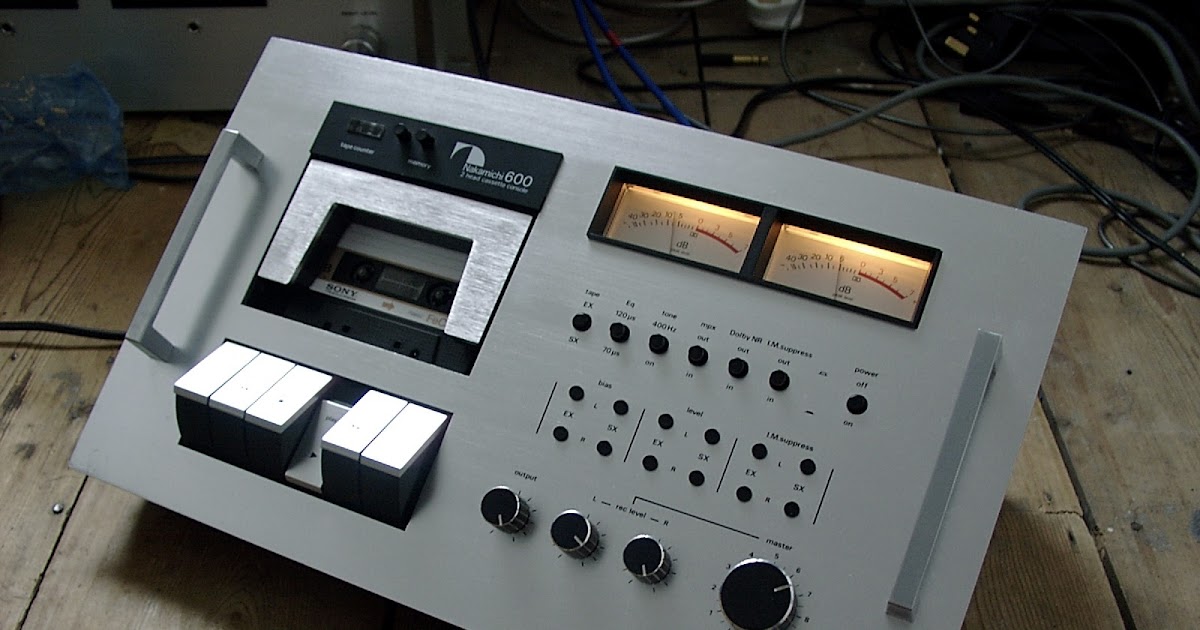It’s easy to dismiss Nakamichi as a seller of exorbitantly priced esoterica. The company earned legendary status thanks to its well-known Dragon and MusicLink lines. Its marque, like Luxman, MacIntosh, Revox, or Goldmund, had guilt-edged, twenty-four-carat gold-plated assurance. Isn’t it true that Nakamichi’s odds of doing anything even substantially affordable were slimmer than seeing flying pigs? Wrong. When it was first released in 1978, the 480 tape cost ‘only’ £220 – Linn Sondek money – which was a bargain by this brand’s standards!
Purists may bemoan the fact that it only has two heads (and hence lacks the crucial split record/play head coveted by serious tape worms), but this is to misunderstand the Nakamichi tradition. Ten years ago, the company wasn’t making unaffordably pricey audio esoterica; instead, it was honing its skill by producing a wide spectrum of OEM gear for others. Have you heard of the Fischer Nakamichi RC-70 (1969), the Marlux 5000 (1972), the Motorola NR-147 (1970), the Sansui SC-700 (1973), the Sylvania SY-32 (1971), or the Concord MK-1X (1971)? Then there was the Harman Kardon CAD-4a from 1967, the Saba CR835 from 1974, the Norelco 2100 from 1971, the Sonab C 500 from 1977, and the Leak 2001 from 1973! When you add Goodmans, Philips, and Elac to the list of companies for whom Nakamichi created and manufactured cassette decks in its early years, it’s clear that this company is more than a collection of eighties Yuppie fashion accessories…
All of this provided the firm with the resources it needed to develop its own components. Rather than relying on third-party OEM manufacturers for critical components, Nakamichi created bespoke designs with improved motors and heads for higher signal-to-noise ratios and lower distortion. The end effect was both audible and produced outstanding measured parameters. The 480 came with a Nakamichi RP-9E record/replay head and an E-8L erase head, as well as three custom motors and a Dolby B noise reduction system with switchable MPX filter (removing the 19kHz filter from the recording signal path). Two precision capstans were operated by DC servo motors via rubber belts, and the conveyance was elegantly built.
There was no variable bias — it came pre-programmed for the company’s own EX, SX, ZX tapes – Ferric, Chrome, and Metal – but it could be adjusted by your Nakamichi dealer. Aside from a tape counter, record level sliders, and fast-ballistic meters, that was it. It was a model of simplicity and ergonomic purity when compared to similarly priced high-end Japanese devices — you placed the tape in, waited a second for the auto tensioner to take up the slack, and then pressed record. It didn’t require any setup, finicky adjustments, or tape calibration; it just got right to work. And as a Nakamichi, you didn’t need a third head because you knew the recording would be perfect.
Even by today’s standards, the sound quality is excellent. It’s bright and clear, with a robust, well-articulated, and tuneful bass, a wide and expansive midband with bold imaging, and a clear, bell-like treble. Flutter, crackle, hiss, break-up, and distortion, oh my! Of course not; we’re not talking about a budget Aiwa, Sony, or JVC here.
The 480z was released in 1980 with a fine bias adjustment, and the 482 was released with a distinct 3-head transport. These are also desirable secondhand purchases, but they muddy Nakamichi’s bare-bones, ‘less is more’ philosophy that the 480 so eloquently proclaimed. All are currently available in mint condition for between £150 and £200. They’re all lovely pieces of kit, with a level of design clarity and ergonomic brilliance that today’s manufacturers could learn from. They’re also a safe used bet because they’re made so well, which isn’t something you can say about cassette decks very frequently. The quality of a classic Mercedes from the 1970s lasts long after the vogue has faded.






